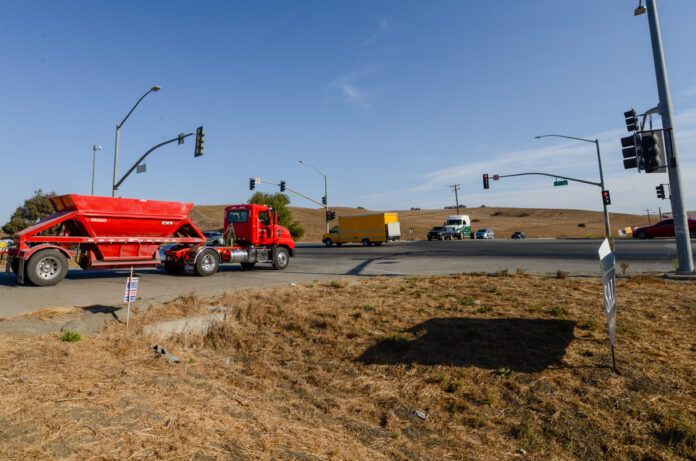
The daily commute on Highway 156 can be a drag, especially during the busier peak hour traffic times.
But Caltrans announced last week that a new road expansion project is coming soon in hopes of reducing some of traffic congestion and saving millions in vehicle operating and accident costs.
The San Benito Route 156 Improvement Project will be a five-mile, 4-lane expressway between The Alameda in San Juan Bautista to the Business Route on Highway 156 near Hollister.
The cost of the project will be about $108 million, which is roughly $30 million less than a previous estimated price tag.
The official construction contract is split up into two phases: utility relocation and road work. Caltrans won’t break ground until December 2021 but commuters will start seeing construction work at Union and Mitchell roads beginning in April or May 2021.
It will be a two-year construction timeline with work finalizing in December 2023 until March 2024. All of the work is going to be on a new alignment and the existing highway will still be functional as a frontage road for farm equipment and local traffic.
On Oct. 27, Caltrans released what’s called “Ready to List”, which is the first step to sending a packet out for the advertisement period to look for construction contractors to review, pick up plans and submit a bid.
Hollister Mayor Ignacio Velazquez said it was long overdue to get the project running again after several people at first were opposed to the idea. He said he wants them to understand that they’re looking into the future; roadwork such as a highway expansion can take some time before any groundbreaking takes place.
“It’s exciting news and a long time coming,” he said. “A lot of work by a lot of people that we finally got this thing through.”
Velazquez said one great thing about the Highway 156 expansion is that it will kick off starting sometime just before the summer.
“Everything is done, it’s just a matter of wrapping up the final steps of it,” he said.
In 2012, a California Environmental Quality Act document was the subject of a lawsuit, causing a delay. Caltrans had to go through the court process to settle things.
Four years later, the California Transportation Commission at the time didn’t have the funding when Caltrans was ready for construction, which delayed the project for two more years.
“For the last several years the delay has really been related to property acquisition and utility agreements,” said Brandy Rider, project manager at Caltrans.
Rider said they have to come to an agreement to relocate a variety of different utilities such as San Benito Water District, PG&E, AT&T, Charter and Comcast. There are a variety of reasons they discuss including fires, mergers with companies, layoffs and utilities. Most of the accusations are complete and two of them in the imminent domain process.
“The utility companies have quite a bit of work to do because there’s gas transmission, gas distribution and electrical transmission that are pretty long runs because they’re adjacent to the highway,” Rider said.
Caltrans is attempting to cut back on commute times with the new highway extension. However, there’s currently about 50 driveways and roads that intersect with Highway 156, which creates conflict points as people attempt to turn onto the busy roadway.
“The new four-lane expressway will carry those inter-regional movements that are going from region to region,” Rider said. “That’s a huge safety improvement to the corridor. There’s not only the congestion side of the (project) but the safety side is really significant.”
Rider, who is taking charge of this expansion project, said there will be some traffic disruption but they’ll be trying to minimize those impacts as much as possible during commute times.
Caltrans is going to work with the Council of San Benito County Governments to come up with a way to notify the public with updates on lane closures or detours. Rider mentioned they want to mimic what the Transportation Agency for Monterey County is doing with what they call the “Cone Zone Report,” which will provide traffic reports, road conditions and accidents on both state highways and local roads.
Rider said if there’s any kind of construction delay it’s going to be minimized in particular during peak periods.
“One of the things we want to do is to be able to communicate that with the public on a regular basis,” she said.
Caltrans will select the lowest bidder and go through the process of awarding the contract. In December, they’ll be going to the California Transportation Commission for an allocation of the funds.







